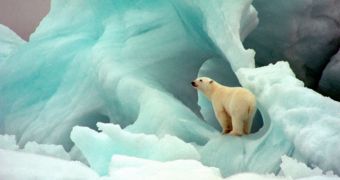Environmental group the World Wildlife Fund (WWF, for short) has recently announced that, soon enough, polar bears living in the Arctic archipelago of Svalbard are to be spied on by specialists and conservationists with WWF-Canon and the Norwegian Polar Institute.
On its website, the organization details that the end goal of this initiative is to determine how these animals are coping with changes in the makeup of their natural habitat, that are brought about by climate change and global warming.
Information shared with the public says that the joint WWF-Canon and the Norwegian Polar Institute research project will target bear moms and their offspring. Researchers are to keep tabs on these animals' whereabouts and movements after the polar bear families emerge from their dens.
“We don’t know what the future holds for these bears. We do know that bear populations deprived of sea ice for significant amounts of time are less likely to survive or breed successfully,” says specialist Geoff York, WWF lead on polar bears.
“For WWF, this is important work to understand how many cubs were born last winter and where they were born. We want to see how polar bears use an area that is encountering such rapid change because of melting and shifting sea ice,” adds Gert Polet, an Arctic expert with WWF-Netherlands.
In order to keep tabs on these polar bear families, the specialists who are to embark on this expedition will fit several females with tracking collars. This will allow them to collect information concerning the animals' movements across the area.
This information will then be compared to data about sea ice availability in this part of the world. Hopefully, this will help researchers determine how changes in sea ice coverage in the Arctic are affecting the local polar bear population.
By the looks of it, there is evidence to suggest that some of the polar bears in the Arctic archipelago of Svalbard are moving away from their former denning sites and are looking to find new ones in regions that did not interest them in the past. It is likely that they are doing so in order to make sure that they are close to sea ice and can hunt after they emerge from their dens.
The expedition during which the polar bear females will be fitted with tracking collars is set to begin on April 11 and last until April 21. The initiative is funded by Canon Europe, the Conservation Imaging Partner of WWF International.

 14 DAY TRIAL //
14 DAY TRIAL //